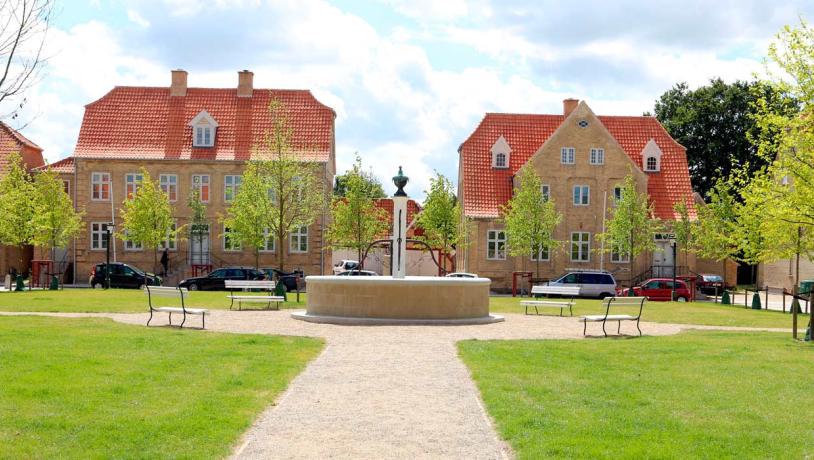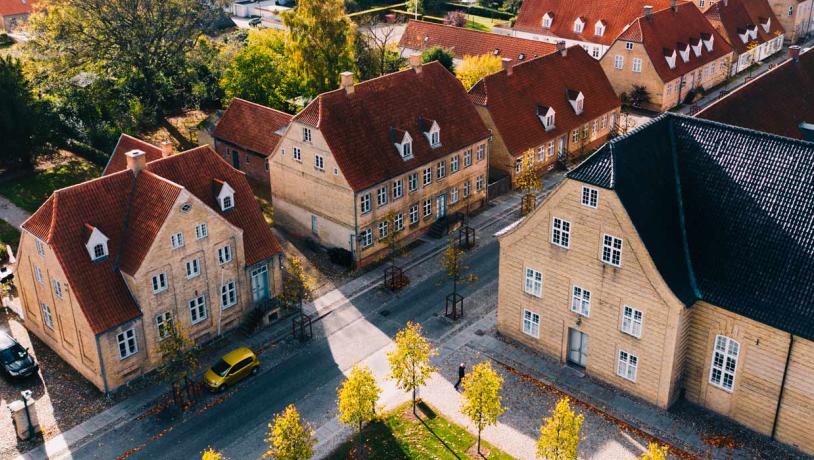
Christiansfeld: The ideal of a city (An outline for life)
You can also explore the planned city, Christiansfeld. It is one of Denmark's first cities which is the result of actual urban planning.
The Brethren's town plan was created with clarity and rigor. Today, Christiansfeld is designated as a world heritage site. The project was an immediate success, but the economic and social injection of salt water took its toll when Denmark had to cede Schleswig.
It started with the town of Herrnhut in Germany
In 1722, a religiously persecuted congregation sought asylum with Ludwig von Zinzendorf. He was a landowner in Saxony. And here the brothers laid out the town of Herrnhut and founded 'the renewed Broderunitet'. Thus the Herrnhut Brethren Congregation was created.
The congregation saw itself as missionary and established brother congregations in other countries such as America, England, Holland and Sweden. They were known as diligent and skilled craftsmen. And in 1771 they were invited to establish a sister city in Denmark to promote economic growth and trade, primarily in Schleswig and Holstein. The congregation accepted the offer, which also provided a ten-year tax exemption and a subsidy for building costs.
 © VisitKolding. Photo: VisitKolding.
© VisitKolding. Photo: VisitKolding.
From bare land to world heritage
In 1771, the Brethren congregation had good experience in building towns. Christiansfeld is thus the twenty-fifth town with the congregation as developer. It is also the city that is closest to the ideal that the Congregation of the Brethren strove to realize. The many building technical, architectural and urban planning experiences culminated in Christiansfeld.
The plan is simple and rigorous. The church and the church square occupy the central space in the town plan. From here, the entire town plan is laid out and measured. Past the church, the city's two main streets run parallel in an east/west direction and frame the church square. Surrounding the square are the city's most important buildings: the Church/Salshuset, the Sister's House, the Widow's House and the priest's and administrator's residences. The Sister House and the Widow House are so-called choir houses, which also include the Brothers House. The congregation was divided according to i.a. sex. Therefore, unmarried women lived in one communal house and unmarried brothers in another.
The gender segregation was also enforced during the church procession. And even at Gudsageren – the Brethren's cemetery – brothers are buried to the west and sisters to the east. On the other hand, there is no difference between the individual burial sites. The stones are similar in expression – as humans we are equal – this also applies in death.
 © Museum Kolding. Photo: Museum Kolding.
© Museum Kolding. Photo: Museum Kolding.
The happy pietists
Christiansfeld is a clean, bright and rigorous city with aesthetic excess. The buildings are made of light stone. The light pours into the city squares. Trees and gardens pay tribute to the green city long before it became modern. From the city there was a view of nature. The good craftsmanship can be seen with the naked eye.
It was a bright and optimistic interpretation of Christianity that the Brethren brought to Denmark. And in the Christian ideal city there is room for everyone in a community that is driven by social considerations and individual development in a constant pursuit of a life in the light of God. The Brethren congregation has also been called the happy pietists.
So how did the plans go? Yes, the king's plan to give Southern Jutland growth and prosperity went well for a few years. However, it suffered a setback with the lost war in 1864 and not least when industrialization took off in the latter half of the 19th century. Here, quantity won over quality. The Brethren's plan to come to Denmark succeeded in return. In Christiansfeld there is still a living congregation with approx. 150 members. And that is one of the reasons why Christiansfeld made it onto the Unesco world heritage list.